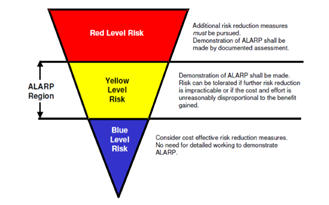Quantitative Risk Assessments (QRA)
We deliver high-quality Quantitative Risk Assessments (QRA) studies at a fraction of the cost of other providers, thanks to our expertise in using and developing advanced drawing analysis software. The latest version of our software, DigiTwiin, is the most powerful tool for automated parts count, and comes with far more capabilities after three years of extensive development effort with Lloyd's Register (LR).
We have conducted safety studies for onshore and offshore oil and gas production facilities, providing fast and accurate results using the latest automated parts count methodology.
Our studies typically output key parameters, including:
-
Individual Fatality Risk (IRPA and PLL),
-
Impairment Risk,
-
Escalation Risk,
-
and other important metrics.
We also optimize separation distances for muster areas and new buildings, evaluate the location based on local or international siting guidelines, and assess whether risks to site personnel are tolerable.
Our parts count software for QRA is the only one in the world that can read a PDF of a P&ID and carry out a parts count within minutes. The software will process the drawings and output a table of results containing the component name, component list ID number, stream ID, phase (gas/liquid), and pipe size. The output is available in marked up drawings and in .txt, .xls or .PDF format, with an accuracy rate of over 99%. In comparison, a manual parts count is typically at 90% accuracy unless double-checked.



Building Risk Assessments (BRA)
Building risk assessments (BRA) are a critical component of safety studies for oil and gas production facilities.
At Advanced Analysis, we follow industry standards and carry out BRA studies according to API 752 or equivalent local regulations. Our methodology consists of three stages, with the complexity, information, and required resources increasing from Stage I to III. Our objective is to screen buildings at the lowest stage possible, ensuring that only a limited number of buildings are carried over to the subsequent stage.
Thanks to our expertise in advanced consequence analysis and the use of state-of-the-art CFD and analysis, we are able to assess the hazards from consequences to buildings resulting from fires, explosions, and toxic/flammable releases. Our detailed work involves selecting and evaluating dispersion scenarios and defining representative sources and locations to capture significant consequence contributors for the facility. We carry out dispersion consequence analysis using CFD for at least a number of gas and pool release scenarios based on maximum credible events (MCEs).
Our results for each of the buildings of interest will be tabulated and displayed on plot plans. This enables us to evaluate the risks to site personnel, optimize separation distances for muster areas and new buildings, and ensure compliance with local or international siting guidelines.
